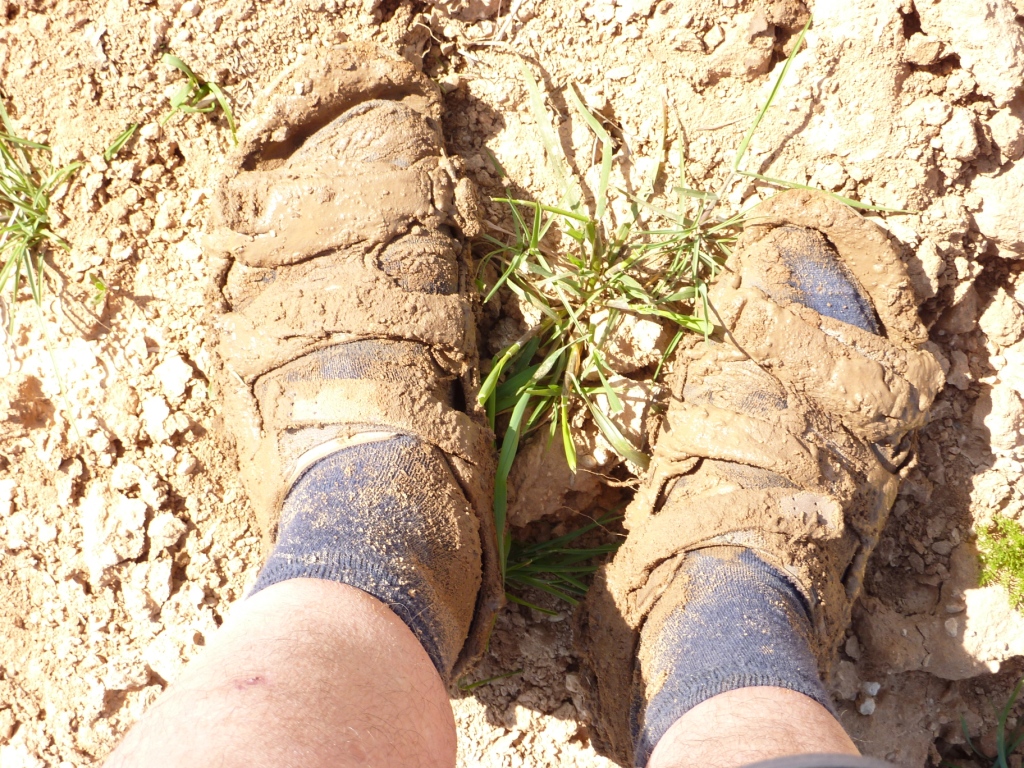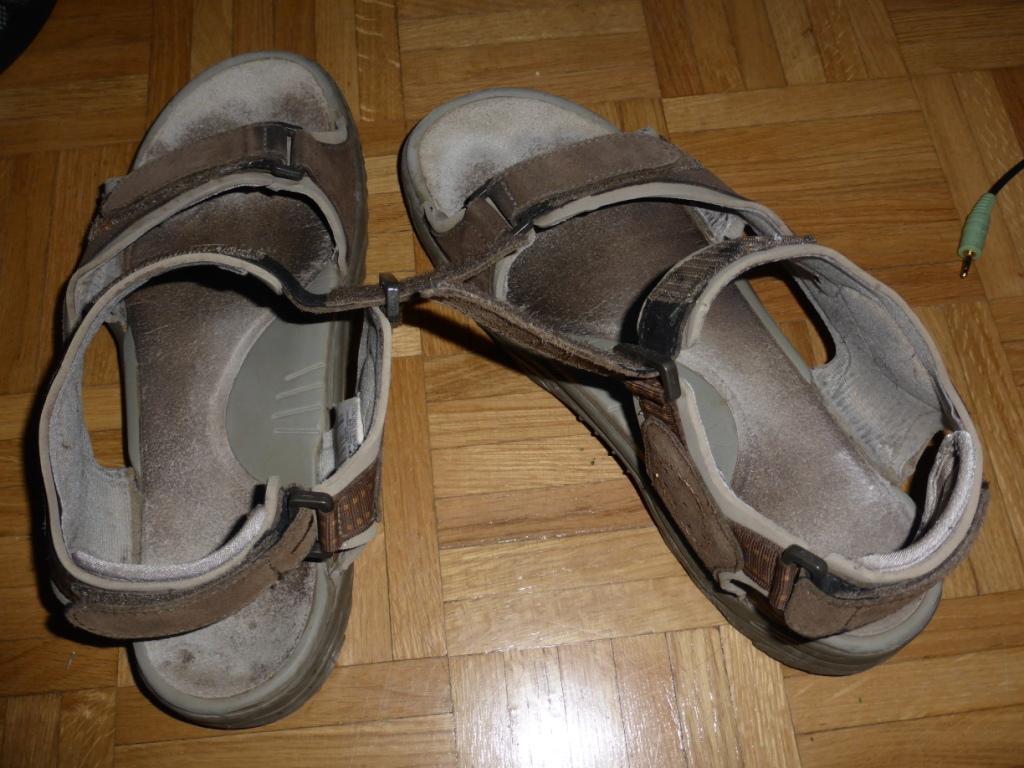Hello All
UPDATE AFTER WALKING SJPP TO SANTIAGO: 22 SEPTEMBER 2012 to 29 OCTOBER and then on 31st OCT onto Finesterra.
There is no wrong or right--- only informed and uninformed decisions.
I allowed a busy pre-Camino schedule to hamper the quest for good walking shoes. Bought three pair of shoes/boots that were too narrow, too too long or just horrid generally.
Ended up taking an old pair of leather boots/ankle support, good tread that were well and truly broken in and great for the width/length.
Two uninformed decisions:
1. Did not mail my post-camino gear in SJJP as planned but thought, what the heck, I can carry it. An extra 4k at least.
2. Did not see whole picture: heavier pack pushing me forward when walking downhill.
3. Did not even DREAM I would have an allergic reaction to elastic in my merino socks!
The old boots--great for anything else--were hell crossing over from SJJP to Pamplona. I had blisters on my toes, purple toenails on a few and my ankles/lower calves looked like eggplants.
Oh, and no, there was NO place to post the extra gear onwards until....Pamplona.
In Pamplona, I tore through my pack and got rid of the post-camino stuff AND my sleeping bag, (used silk liner and blankets whole way).. Posted it all to Santiago. Weight went down to 5k.
Bought a pair of Merrills (no ankle support) at the shop there, hugely expensive compared to buying in UK/USA, but I was deeply grateful nonetheless. A whole size bigger.
Headed out of Pamplona and stayed at an albuerque a few k away; the woman who runs it is famous for 'healing' feet. She showed me how to retie my shoes to keep them from slipping (marvellous!), and to use other bandages, as most of the touted band-aids actually cause problems. Some toenails had blisters underneath and what she did actually saved a couple.
She told me that I must be allergic to the elastic in my merino socks (I wore two merino tops whole trip no problems). I changed over to an inner thin bridgedale sock and an outer pair of bamboo socks.
(the very expensive two pair of merino socks I carried to Santiago and gave to another Pilgrim whose socks were 'holy' and she was still travelling round the world....)
My feet began healing immediately and in three days as the old woman had said, the eggplant effect on my ankles/calves disappeared. Within another two days my toes had healed fantastically. I didn't need bandages and never looked back.
I saw people walking barefoot. I saw people walking in sandels no socks, and sandels with socks. I saw people walking in light, mid and heavy boots. And everywhere I saw new shoes and boots abandoned by the side of the Camino.
I saw people with such bad feet, I literally counted my blessings and considered that my small amount of pain/trouble (in comparison to others) was as nothing. There were folks with raw feet underneath and toes--well, enough.
My new merrill's were NOT broken in, I did that along the way and up and down a few hills and mountians, but bless them--I NEVER looked back, never had another moment of discomfort let alone pain.
Swelling: my feet didn't swell on the road and didn't get bigger as so many people said would happen or post here.
Get your socks right for you AND right for the season, and get your shoes/boots at least ONE SIZE LARGER. This journey does not need ankle support unless you personally know that you need it (weak ankles, personal history etc).
I've never used walking sticks, but did--and will do so again. I used vaseline on my feet each morning and will do the same again.
Heading out to Porto on the 24th of April 2013 to walk from there to Santiago.
Meanwhile the now vetern Merrill's jump up and down at the front door each time I go out of the house. I tell them, "no yet, but we are heading out again VERY soon". They are eager for the road and so too am I.
My feet? Are fine and the one (lost) toenail has been busy growing back in.
100, or 200 or 500 miles: just make sure your shoes are bigger than you normally take and--make sure your sense of humor is the first thing you pack, and then remember to use it every day!
Apologies for length, but hope it helps at least one SOLE....

Blessings to all
Francesca
p[-





























